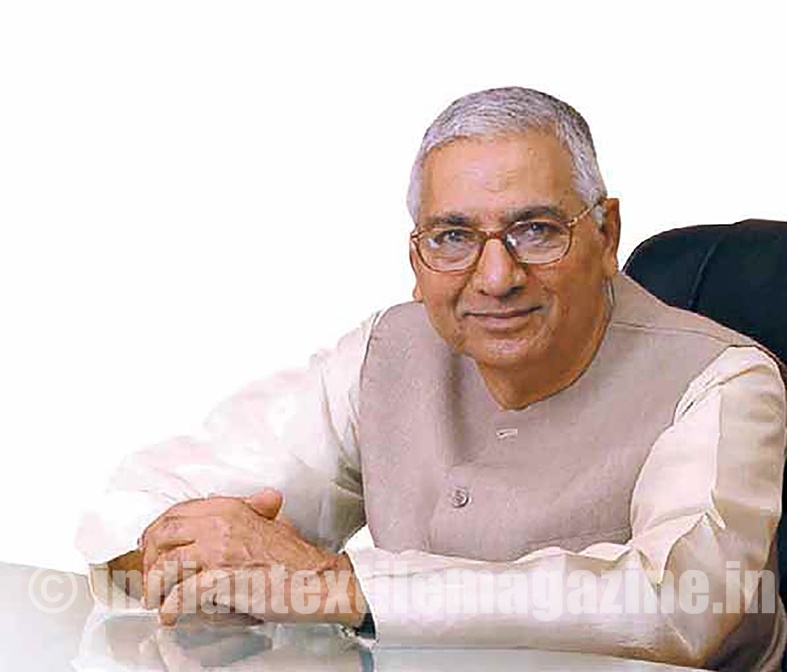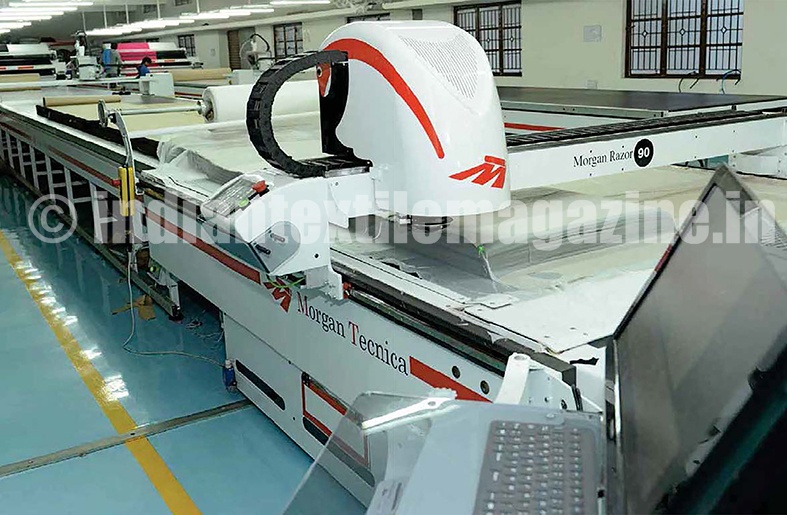Dollar Industries Ltd. started as a small family-run hosiery brand in 1972. Having grown over the years, the Kolkata-based company is today an internationally recognised innerwear manufacturer, addressing men, children and women. The company manufactures a range of more than 250 products across all innerwear segments. With its growing presence pan-India, Dollar products are also marketed in 11 countries.

Dollar has manufacturing facilities located at Kolkata, Tirupur, Dindigul, Erode, Delhi and Ludhiana. These facilities comprise assets dedicated to spinning, knitting, processing, cutting, stitching and packaging, marking complete integration. The Tirupur facility is supported by an effluent treatment plant that makes it zero liquid discharge. A 5MW wind energy facility in Tamil Nadu provides for the spinning mill’s energy needs.
Based in Kolkata, Dollar also engages in responsible job-working across units in Kolkata, Tirupur, Delhi and Ludhiana. It reported revenues of Rs. 830 crores during 2015-16.
Mr. Din Dayal Gupta, Chairman, says, “We are optimistic of generating Rs. 1,000 crores in revenues in 2016-17 even as challenges of economic slowdown and consumer downtrading remain. The ability to pass on an increase in raw cotton prices should make the achievement of our goal easier, in addition to our being able to generate a higher throughput per dealer, address market gaps effectively and increase offtake from our premium and super premium categories. In doing so, we believe that we would be the fastest in our sector to get to this four-digit benchmark, emphasising the point that we have always made: Dollar is a different kind of company”.
The company’s manufacturing operations represent the heart of its quality emphasis. A prudent and phased investment in manufacturing assets has translated into a number of benefits – superior quality as reflected in minimal variations between yarn thickness and thinness, quicker offtake during full markets and yarn premium during buoyant markets, growing offtake across a demanding clientele, peak asset utilisation (100 per cent across spinning, weaving and processing equipment), negligible product rejects, high labour productivity and minimal downtime.
As a focused strategy, the company invested in complete backward integration – from the consumption of raw cotton to final product delivery – convinced that the economies of scale and centralised supervision would enhance the company’s competitiveness beyond a complete reliance on job working. This backward integration – the only such instance in India’s innerwear hosiery sector – has helped strengthen margins and profits beyond the sectoral average.
Another important edge in the company’s proprietary manufacturing facilities has been its forward-looking investment in clean technologies and environment-friendly infrastructure. The company invested in 5MW wind renewable energy facility in Tamil Nadu, wheeling the energy generation to address its power appetite at the Dindigul manufacturing facility. Besides, it invested in Rs. 12 crores in an effluent treatment plant in 2014. This investment has resulted in the company’s facility being zero liquid discharge, utilising treated process water for captive use and correspondingly reducing its drawal from municipal sources.
Dollar Industries is vertically integrated with end-to-end manufacturing, including spinning, knitting, processing house, elastic, cutting, stitching and finishing machines. It has also invested in the best global brands, including Rieter, Schlafhorst, Bierrebi S.R.L, Scalvos S.A., Bianco SPA and Morgan Tecnica SPA.
To know more about the company’s future plans for development and expansion, The Textile Magazine recently had a detailed interaction with Mr. Din Dayal Gupta.
Excerpts from the interview:
Q: How is the company responding to this unforeseen divergence?
A: At Dollar, we believe that the future of our company lies in sustainability. In turn, we believe that sustainability will be reinforced through the ability to evolve our product mix towards the value added, leaving us with adequate surpluses to reinvest in our brand, vendors, distribution partners and manufacturing assets. This strategy is visibly reflected in our evolving sales mix: from the economy towards the premium and the super premium (prospective).
From this it would appear that the company would like to consciously vacate the economy segment completely. This would not be true; what would be a more accurate picture is that one segment of consumers is moving away from premium products towards the economy segment and within the economy segment they are selecting to buy the cheapest products on offer.
At Dollar, even as we are playing the value game through progressive premiumisation, we are attempting to cater to the economy segment as well. Through various initiatives, we competed price to price with a large number of brands. The result is that our economy segment accounted for 45 per cent of revenues during 2015-16, translating into revenues of Rs. 360 crores.
Q: How did the company strengthen its business to address the future?
A: One of the principal initiatives was that when profits increased, it would have been tempting to play to the gallery and report a short-term spike in profits by keeping brand expenditure at the level of the previous year.
On the contrary, the company did something courageous. When revenues increased, the company concurrently invested a considerably larger amount in brand building, strengthening its capacity to enhance recall and report larger profits across the foreseeable future.
The result was that the increment in brand investment was Rs. 4.42 crores in 2014-15 over the previous financial year; the increment in brand spending in 2015-16 was Rs. 23.21 crores during the year under review leading to a total brand spend of Rs. 72.75 crores – 8.7 per cent of our revenues and possibly one of the highest quantum brand spends in the country’s innerwear industry.
We believe that the quantity and quality of this spending will continue to rejuvenate our brand, translating into not just increasing revenues but also increasing revenues of value added products.
Q: What were some of the other initiatives that strengthened the company’s business in 2015-16?
A: The company made a decisive initiative to strengthen its aspirational positioning in 2015-16. For years, there were largely two segments that we addressed – economy and premium. In the last financial year, the company made a decisive initiative. It launched brand Force NXT to address the super premium category.
We feel that this extension represents an idea whose time has come for some good reasons. With urban incomes rising, consumers generally moved to higher priced garments even as they continued to select legacy innerwear brands. There has been a major rethink on the selection of innerwear towards the super premium since; these super premium products are marked by fabric manufactured using superior yarn, stitched using superior thread, cut around contemporary fashion trends and aligned around a superior branding aspiration. Dollar began to address this segment from the second half of the last financial year onwards, the benefits of which will start becoming evident from the current financial year onwards.
We believe that this extension represents a watershed in our existence, sending out an unmistakable signal of our desired premium positioning.

